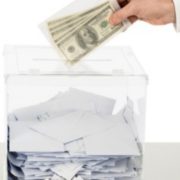PPP Loans Open January 11th
PPP loans re-opening and important California deadlines approaching
We have received many questions regarding new PPP loans and the California grant deadline. Both are addressed below.
PPP loans
The SBA has announced that the Paycheck Protection Program (PPP) will reopen the week of January 11.
When the program reopens, the following new PPP funds will be available to borrowers:
- New “second draw PPP loans” for smaller businesses who have experienced a 25% decline in gross receipts; and
- Supplemental funding for:
- Original PPP loans where the loan amount would have changed due to new rules that have been released; or
- Businesses that did not originally apply for first draw PPP loans.
Only community financial institutions will be able to accept first draw PPP loan applications on Monday, January 11, and second draw PPP loan applications on Wednesday, January 13. The PPP program will then open to all other participating lenders shortly thereafter.
The SBA also released new interim final rules that implement the new loans and answer some questions, including the following:
- For the 25% decrease in gross receipts for second draw loans, the Consolidated Appropriations Act of 2021 states that they must show a decrease for a quarter in 2020 compared to a quarter in 2019. However, the interim final rules also say that businesses can compare calendar year 2019 to calendar year 2020 to show the 25% decrease;
- First draw PPP loans will not be included in the gross receipts calculation for second draw loans;
- In addition to showing that they have used, or will use, all of their first draw loan, second draw borrowers must have spent the full amount of the first draw loan on eligible expenses under the PPP rules to be eligible for a second draw loan. This means borrowers requesting second draw loans should prepare forgiveness applications for their first draw loans, because they are likely to be requested by the bank;
- EIDL grants no longer reduce PPP forgiveness. Borrowers who previously had their PPP forgiveness reduced by the amount of the EIDL advance should contact their lender;
- Borrowers in bankruptcy may not receive additional PPP funds; and
- Businesses that have temporarily closed may still apply for PPP loans to help them reopen.
The interim final rules on first draw PPP loans can be found here:
www.sba.gov/document/policy-guidance-ifr-paycheck-protection-program-ppp-amended-economic-aid-act
The interim final rules on second draw PPP loans can be found here:
www.sba.gov/document/policy-guidance-ifr-paycheck-protection-program-ppp-second-draw-loans
California deadlines approaching
- The deadline to apply for a California Relief Grant of up to $25,000 has been extended until Wednesday, January 15, 2021. Details on this program can be found at: https://careliefgrant.com/
- The deadline to reserve the California Main Street Small Business Credit is Friday, January 15, 2021. Businesses that are currently closed may still apply if they had more full-time equivalent employees in July through November of 2020 than they did during the second quarter of 2020. Details on this program can be found at: https://cdtfa.ca.gov/taxes-and-fees/SB1447-tax-credit.htm
Please reach out with any questions about this article or to talk to one our CPA’s regarding your taxes.
info@mrarrachecpa.com






 The average US household carries approximately $16,000 of credit card debt; average mortgage debt $157,000; average student loan $33,000 (source http://tiny.cc/ee3q0x) … that is approximately $10,000 of interest per year :/
The average US household carries approximately $16,000 of credit card debt; average mortgage debt $157,000; average student loan $33,000 (source http://tiny.cc/ee3q0x) … that is approximately $10,000 of interest per year :/